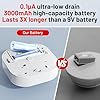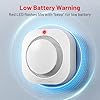The metal detector was invented in 1881 by Alexander Graham Bell. He was trying to find a way to detect metal objects underground.
Contents
How the Metal Detector Invented Saved Lives?
The Metal Detector was invented in the late 19th century by Alexander Graham Bell. The device was designed to locate metal objects hidden underground. The Metal Detector saved many lives during World War I and II, as it helped soldiers locate land mines and other hidden explosives. The Metal Detector is still used today to help keep people safe from hidden dangers.
Why the Metal Detector is an Important Invention?
A metal detector is an instrument that can detect the presence of metal in an area. Metal detectors are mostly used to detect the presence of weapons, explosives, and other potentially dangerous objects. However, they can also be used to find lost or hidden objects or to detect the presence of metal in the environment.
Metal detectors work by detecting the presence of metal in the area. They are usually used to detect the presence of weapons, explosives, and other potentially dangerous objects. However, they can also be used to find lost or hidden objects or to detect the presence of metal in the environment.
Metal detectors are mostly used to detect the presence of weapons, explosives, and other potentially dangerous objects. However, they can also be used to find lost or hidden objects or to detect the presence of metal in the environment.
The History of the Metal Detector
Invented in 1874 by Alexander Graham Bell, the metal detector was originally designed to find bullets inside wounded soldiers during the Battle of Gettysburg. However, the device was not perfected until the early 1900s, when it was used successfully to find underground water pipes and other metal objects.
During World War I, metal detectors were used extensively to locate land mines and other hidden metal objects. In the 1930s, the first portable metal detectors were developed, and these were used extensively during World War II to locate hidden weapons and other metal objects.
Today, metal detectors are used for a variety of purposes, including security screening, treasure hunting, and geological surveying. Metal detectors can be used to find a wide variety of metal objects, including coins, jewelry, and even hidden weapons.
How does the Metal Detector Works?
A metal detector is a device that uses electromagnetism to detect the presence of metal. The most common type of metal detector is the hand-held metal detector, which is used in security screening at airports and other public places.
How does a metal detector work? A metal detector consists of a coil of wire that is wrapped around a metal rod. When an electrical current is passed through the coil, it creates a magnetic field. When the coil is placed near metal, the metal disrupts the magnetic field, and the detector beeps.
What are the different types of metal detectors? There are two main types of metal detectors: hand-held and ground-penetrating. Hand-held detectors are the most common type and are used for security screening at airports and other public places. Ground-penetrating detectors are used to locate buried metal objects, such as pipes and cables.
How do I choose the right metal detector? The type of metal detector you need depends on what you want to use it for. If you are looking for a metal detector for security screening, a hand-held detector is the best option. If you are looking for a metal detector to locate buried metal objects, a ground-penetrating detector is the best option.
The Importance of the Metal Detector in Food Processing
The food industry is responsible for the safety and quality of the food we eat. To ensure that food is safe to eat, the industry relies on a number of different technologies, one of which is the metal detector.
Metal detectors are used in food processing to identify and remove metal contaminants from food. These contaminants can come from a variety of sources, including food packaging, processing equipment, and even the ingredients themselves.
While metal detectors are not perfect, they are a critical tool in the food safety arsenal. They can help to identify and remove contaminants before they reach the consumer. In doing so, they help to ensure that the food we eat is safe and of high quality.
The Benefits of the Metal Detector in the Workplace
The use of the metal detector in the workplace can offer many benefits to employers. By using a metal detector, employers can help to ensure the safety of their employees by preventing them from coming into contact with hazardous materials.
Additionally, the use of a metal detector can also help to reduce the amount of time that employees spend searching for lost or misplaced items. Finally, the use of a metal detector can also help to increase the overall security of the workplace by deterring theft and vandalism.
Why the Metal Detector is a LifeSaving Invention?
The metal detector is a life-saving invention because it can detect the presence of metal objects. This is useful in many situations, such as when you are looking for a lost item, or when you are trying to find a hidden object. Metal detectors can also be used to find people who have been buried alive.
Summary
The metal detector was invented in 1881 by Alexander Graham Bell. He was trying to find a way to find metal objects underground. He was not successful in his first attempt, but he eventually perfected the metal detector. The metal detector is now used in many different ways, including security, search and rescue, and prospecting.



















